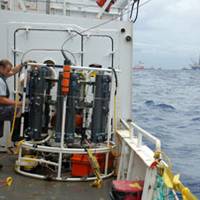Schmidt's Newly Refitted Research Vessel Falkor (too) Launched

Schmidt Ocean Institute announced that its newly refitted research vessel has been launched and is ready to be used by scientists worldwide to push the frontiers of deep sea expedition.Funded by Schmidt Ocean Institute founders Eric and Wendy Schmidt, the 110-meter global-class research ship, Falkor (too), was refit at Freire Shipyard in Vigo, Spain, with sea trials taking place off Puerto Rico. It will now embark on a series of expeditions and be available to scientists and technologists globally at no cost in exchange for making their research and discoveries publicly available.
LNG Fuel is Not a Cure-all Solution
Liquefied natural gas (LNG) is not a panacea to reducing greenhouse gas emissions, and its increasing use as a marine fuel could be worse for the environment than burning heavy fuel oil, said Ian Adams, the former CEO of the International Bunker Industry Association. “Whilst it is well documented that LNG is an excellent solution for reducing SOx and NOx emissions, I am dismayed to see it being promoted as a solution for reducing GHGs,” Adams said, in stark contrast to claims that the use of LNG as a marine fuel can reduce the industry’s CO2 emissions by as much as 75 percent. Adams, a Fellow of the Institute of Marine Engineering, Science & Technology who now heads the Association of Bulk Terminal Operators…
From Bow to Stern: Performance & Sustainability

Understanding On Board Lubricants – examining impact on performance and the environment, too. Performance and sustainability—two words with growing importance in the marine industry, especially when it comes to lubricants. Performance is a must-have for a wide range of components to function properly aboard any ship, while regulatory vessel oversight and greater corporate understanding is providing an opportunity for enhanced sustainability. From bow thrusters to stern tubes, onboard lubricants are seeing the convergence of performance and sustainability.
Underwater Hydrocarbon Plume in Gulf

Scientists funded by the National Science Foundation (NSF) and affiliated with the Woods Hole Oceanographic Institution (WHOI) have detected a plume of hydrocarbons at least 22 miles long and more than 3,000 ft below the surface of the Gulf of Mexico, a residue of the BP Deepwater Horizon oil spill. The 1.2-mile-wide, 650-ft-high plume of trapped hydrocarbons was detected during a ten day subsurface sampling effort from June 19-28, 2010 near the wellhead. The results provide a snapshot of where the oil has gone as surface slicks shrink and disappear.





